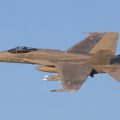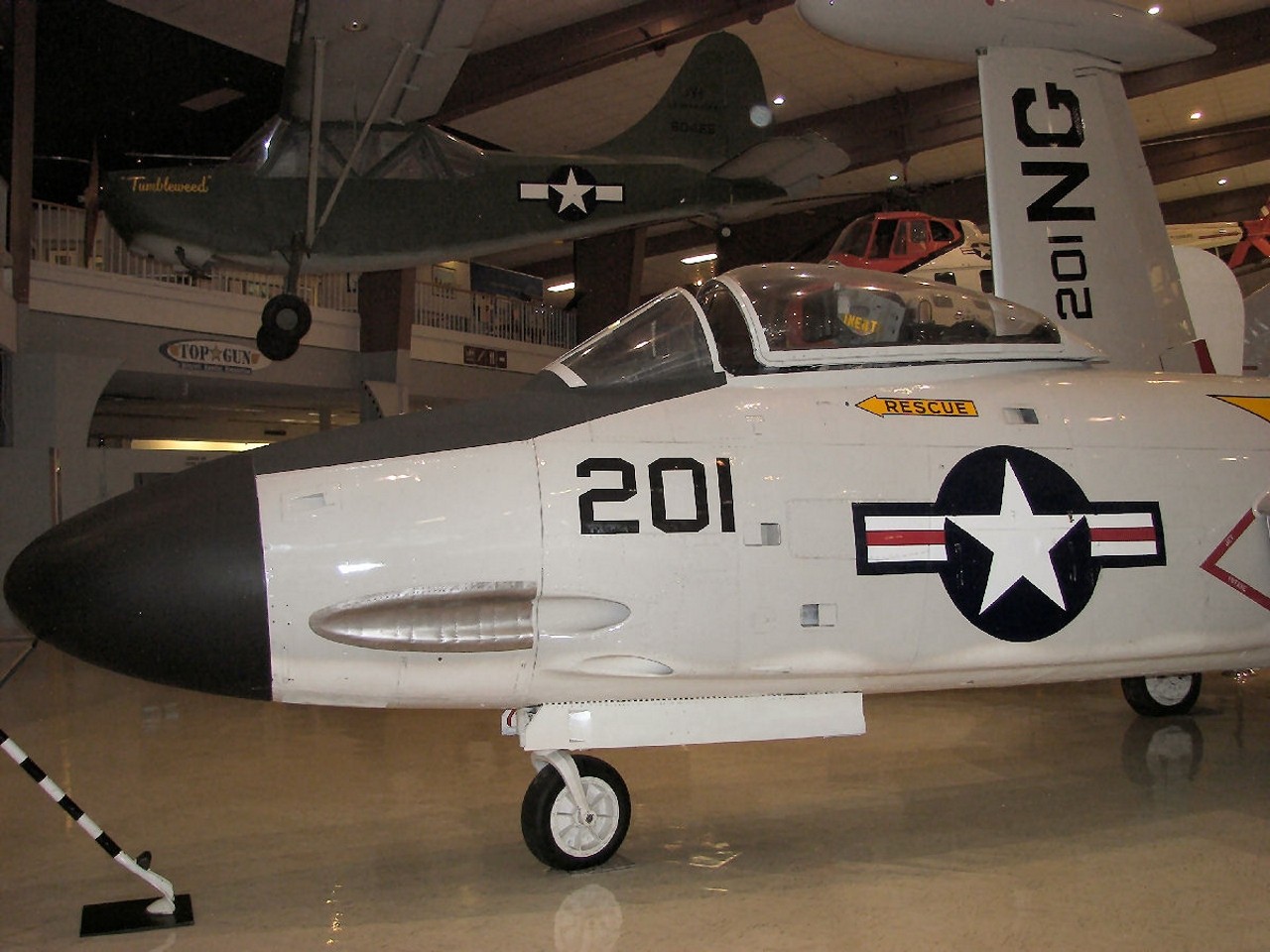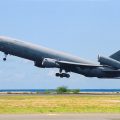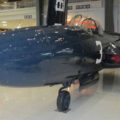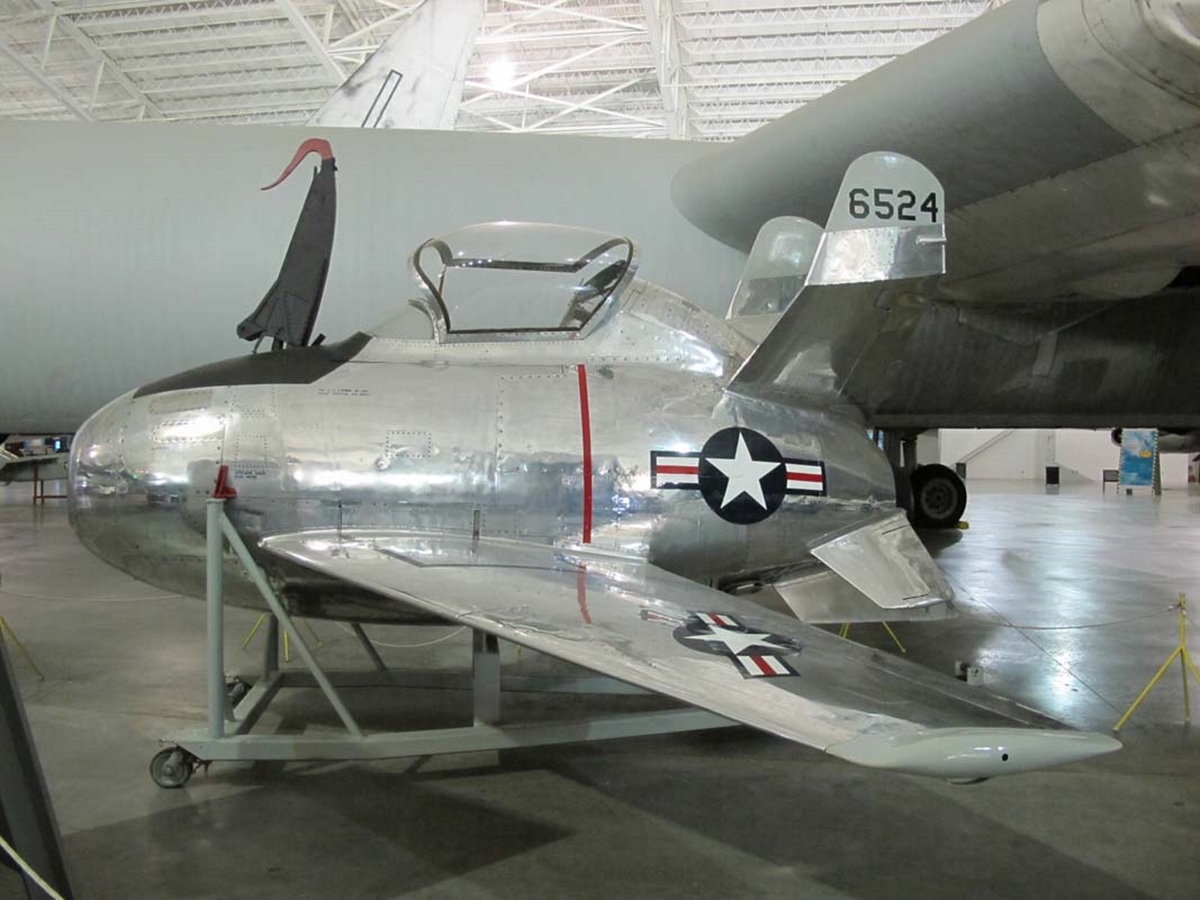
McDonnell XF-85 Goblin | |
|---|---|
| Maa | Yhdysvallat |
| Rooli | Torjuntahävittäjän prototyyppi |
| Ensimmäinen lento | 9. toukokuuta 1949 |
| Rakennettu | 2 |
Nniiden McDonnell XF-85 Peikot on yhdysvaltalainen hävittäjälentokoneen prototyyppi, jonka McDonnell Aircraft suunnitteli toisen maailmansodan aikana. Sen oli tarkoitus käyttää jättiläisen Convair B-36 -pommikoneen pommipaikasta loishävittäjänä. XF-85: n aiottu rooli oli puolustaa pommikoneita vihamielisiltä torjuntakoneilta, mikä oli tarpeen toisen maailmansodan aikana. McDonnell rakensi kaksi prototyyppiä ennen kuin ilmavoimat (USAAF) lopetti ohjelman.
| McDonnell XF-85 Goblin kävelee ympäriinsä | |
|---|---|
| Valokuvaajat | Johannes Pahus, Vladimir Jakubov |
| Lokalisointi | Strateginen ilma- ja avaruusmuseo, Ashland |
| Valokuvat | 76 |
| McDonnell XF-85 Goblin kävelee ympäriinsä | |
|---|---|
| Valokuvaajat | Johannes Pahus, Vladimir Jakubov |
| Lokalisointi | USAF: n kansallismuseo, Dayton |
| Valokuvat | 96 |
Aiheeseen liittyvät sarjat:
Etsi sarjoja eBaysta:
Katso myös:
Nniiden McDonnell XF-85 Peikot was an experimental fighter aircraft designed by the McDonnell Aircraft Corporation in the late 1940s. It was intended to be deployed from the bomb bay of a B-36 Peacemaker bomber as a parasite fighter to defend the bomber from enemy interceptors. The Goblin had a small, egg-shaped fuselage with a bubble canopy, short wings with wingtip stabilizers, and a single turbojet engine. The aircraft was equipped with four 0.50 in (12.7 mm) machine guns and could carry two 1,000 lb (454 kg) bombs or rockets under its wings. The Goblin was attached to a trapeze mechanism inside the bomb bay of the B-36 and lowered or raised by a hydraulic system. The pilot had to manually dock and undock the fighter from the trapeze, which required precise flying skills and good visibility.
Nniiden Goblin was tested in 1948 and 1949, but it faced many technical and operational challenges. The aircraft had poor performance and stability, limited range and endurance, and no landing gear. The docking procedure was difficult and dangerous, especially in bad weather or under enemy fire. The concept of parasite fighters was also becoming obsolete as jet fighters improved their speed and range. The Goblin program was cancelled in 1949 after only two prototypes were built and seven flights were made. The Goblin remains one of the most unusual and ambitious aircraft designs in aviation history.
Näkymät : 1995




